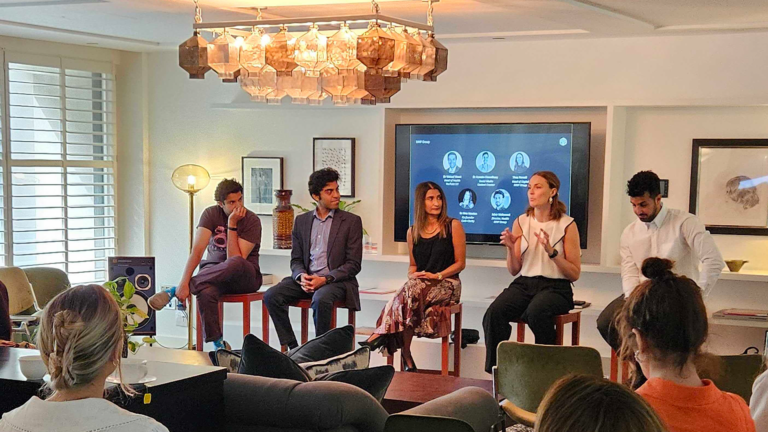

For social media users, video represents a powerful medium that is ever-present across multiple different social media platforms, from YouTube and Instagram to TikTok. Hours are spent consuming videos that can deliver impactful, well-paced and insightful content on all manner of subjects to specific audiences. Therefore it should come as no surprise that video can be an incredibly compelling – and potentially life changing – tool for health information to be conveyed.
So how can healthcare organisations – such as industry, charities or the NHS – harness this power and get the information they want to communicate to the audiences they want to reach? And how can this be done in a compliant way whilst maintaining the creative spirit and engagement that draws audiences in? We explored those questions and more at MHP Group’s recent event, Video, influencers and trusted health information.
For our expert panel discussion we were joined by Head of Health at YouTube Dr Vishaal Vishani; ABPI compliance expert Dr Rina Newton; content creator Dr Azmain Chowdhury; and MHP Group’s Head of Digital Thea Parnell to explore the potential of working with creators to reach audiences, and delivering impactful messages.
Here are five key takeaways from that discussion:
It’s one thing to recognise the power of video on social media, but another entirely to make the most of it. Before any project is undertaken, a thorough consideration of exactly what you want to achieve is needed, encompassing objectives, desired outcomes and strategic execution. Doing so will help determine fundamental questions like: who are we trying to talk to?; what are we trying to tell them?; what platform is best suited to do all this?; and what does success look like?
There are countless ways to share health information using video. But to make it engaging you need to know your audience, or ‘fish where the fish are’ and make content that they will actually like to watch. Sometimes this might be a piece of content that can capitalise on a trending theme, at other times ‘evergreen’ topics that capture the imagination. Partnering with content creators who already hold an audience base and understand what does and doesn’t work for them is a great place to start, and by adapting your messaging to fit the environment where your audience already engages, you can increase the chance of it being viewed and absorbed.
Understandably, when it comes to health, there are going to be concerns over accuracy and misinformation. Building trust with your audience is paramount to ensuring any message you create actually lands. Content creator medics approach their video work with the same commitment to evidence-based medicine and scientific rigour that they would apply in the consultation room. And platforms are responding to this need too, with YouTube recently launching its ‘health shelves’ product, for accredited authoritative content that users know they can trust.
For organisations partnering with content creators, trust is also critical. A strong working relationship that is built on shared objectives, clear roles and responsibilities and space that allows for creativity in rigour will result in video content that feels authentic and trustworthy.
Regardless of whether the healthcare organisation is a pharmaceutical company, patient advocacy group or NHS body, the sharing of healthcare information is highly regulated, and maintaining relevant compliance standards is non-negotiable. This, after all, is what builds and maintains trust amongst audiences.
To navigate the at-times complex landscape of digital content creation, the first step healthcare organisations must take is to form a cross-functional internal team who can develop a comprehensive checklist of any potential risks – compliance, reputational or otherwise, and work systematically to design steps to mitigate against these. This checklist will form the ‘guardrails’ of any project, within which creators can be given the freedom to make content they know will work for their audiences yet still meets all necessary standards.
As with all projects moving into new areas, a degree of trepidation is natural and to be expected. But as our panel discussion proved, this is about the ‘art of the possible’ and there is willingness to explore just what that can look like. We should remember that compliance should not be seen as a deterrent; rather, it should serve as a guiding principle to deliver credible and accurate health information. After all, if just one person can engage with a video that delivers a credible health message that changes the course of their life for the better, that is a worthwhile thing to strive for.